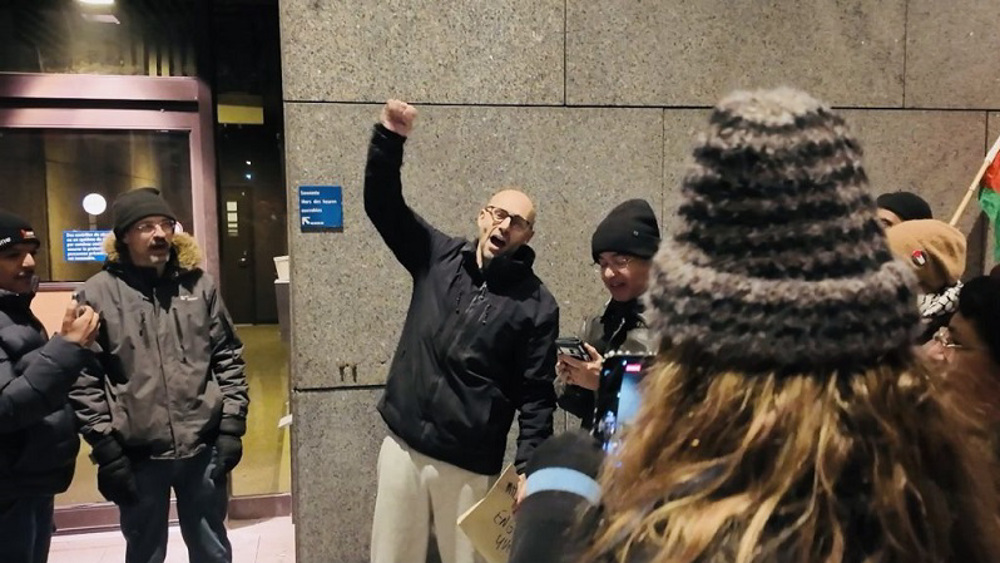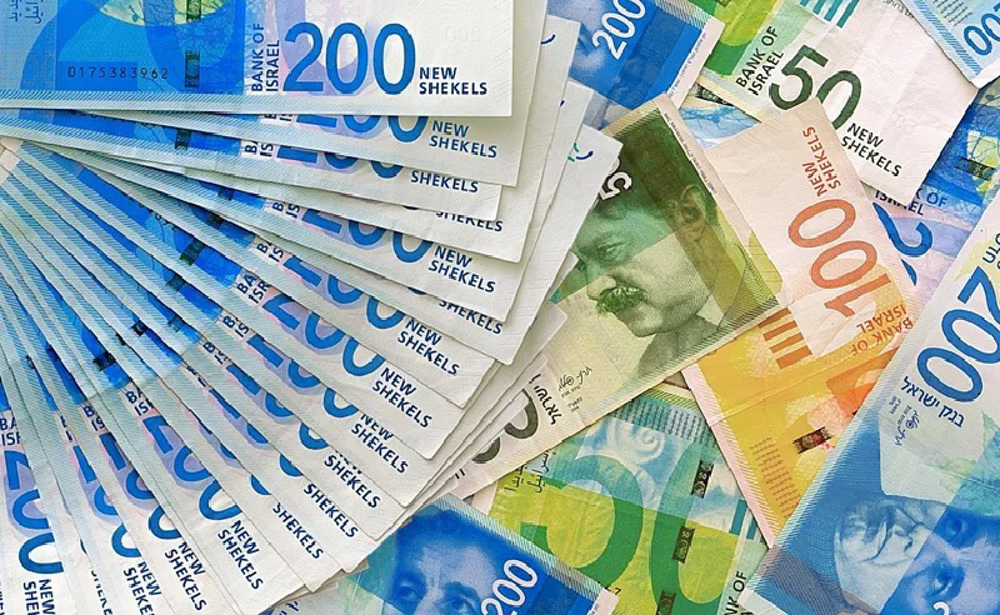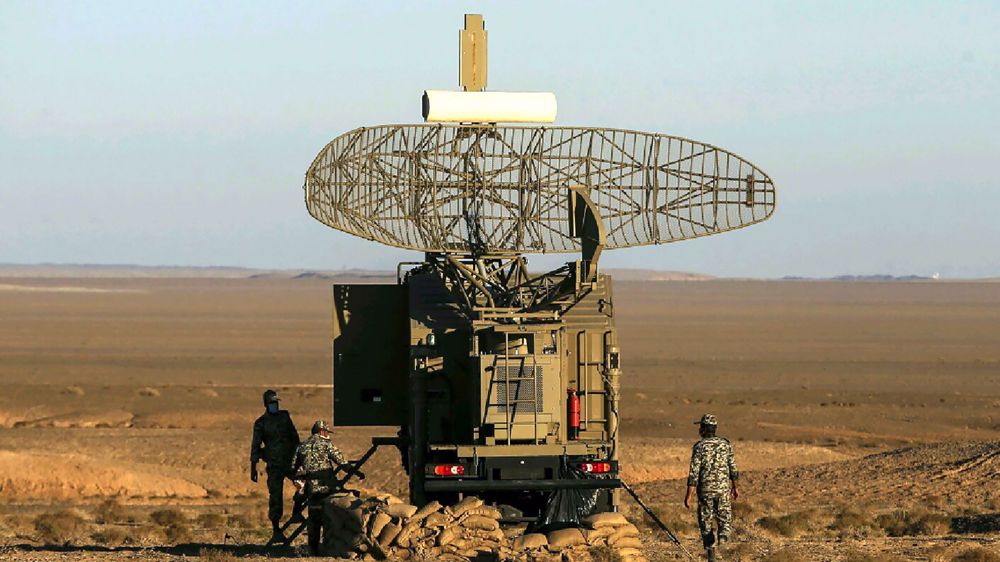Iran free to buy and sell weaponry prohibited since 2010
Under the terms and conditions of JCPOA, endorsed by resolution 2231, the UN arms embargo on Iran ended on the 18th of October, meaning Iran is at liberty to buy or sell weaponry prohibited from 2010, without US interference.
Should president-elect Joe Biden take the reins uncontested, he will re-enter the JCPOA or nuclear deal.
Biden will re-enter the deal if Iran re-commits to its nuclear commitments. Iran started stepping back from those commitments because incumbent US President Trump trashed the deal to begin with.
So re-committing should be no problem for this country; except that the US will have to go first, by once again joining the JCPOA club. Once that is settled, the problem will be solved.
Will Biden put the horse before the cart and will Iran get to benefit from lifted arms sanctions in an orderly fashion?
US failed to prevent lifting of arms sanctions
The US tried to prevent the lifting of arms sanctions against Iran, and had by mid-August 2020 proposed a draft resolution for the Security Council to vote on. But it failed to win the vote.
The US has not only failed to acknowledge the loss but persistently continues to threaten anyone wanting to get into arms deals with Iran.
Actions speak louder than words
Legally Iran is free to openly buy advanced weaponry and sell its defense equipment to anyone looking for quality at a reasonable price. But will America suddenly turn a new leaf and respect international law, after 4 years of deal-breaking?
It is still limited to words and the US has not put it into action yet. Nothing has happened to either prove or disprove it. No arms embargo shipped from or destined to Iran has been seized to conclude that the US or any other country has applied arms embargo against Iran. We have not yet seen such a thing yet, but the arms embargo has been lifted on paper. The Islamic Republic is entitled within the framework of international law and other UN resolutions to export arms to or import arms from any country it desires.
Mohammad H Mohammadi, International Affairs Analyst
When the proposed resolution didn’t work to keep arms sanctions in place, the US sought to trigger the snapback mechanism. This way ALL sanctions including arms sanctions would just snap back into place.
US loses face
But again that mechanism is a provision in resolution 2231 of the JCPOA, of which America is no longer a member; it unilaterally pulled out of the JCPOA in 2018. And the Security Council at large just wouldn’t hear of reinstating arms sanctions on Iran.
It was a big failure for the US. The Americans expected their European allies to stand with them. Now 75 years after the end of WWII, for the first time the EU troika adopt a position in total opposition to the US’s and vindicate Iran. That strengthened Iran’s position in international forums. The US can continue to fabricate any obstacle it wants, but Iran will continue to exercise its rights.
Hadi Seyyed Afghahi, Analyst, Middle East Affairs
Will the lifting of the arms embargo hold?
Theoretically, Iran is now at liberty to purchase anything from tanks to warplanes and naval vessels without the need for UN approval.
One of the problems of the JCPOA is that it is not respected by Europeans and by the main parties that were to guarantee that Iran would receive its merits.
So based on JCPOA and resolution 2231, they need to guarantee that Iran will be provided with its merits and all the sanctions will be removed under the JCPOA, including the US, EU and other types of sanctions.
So the UN resolution stands above all, 2231 is more important than EU rules and regulations.
Mostafa Khoshcheshm, Political Analyst
Before this, Iran could only purchase purely defensive weapons, including, the Russian-made S-400 air defense system, if it desired and were left to its own devices.
There might be even better techs which could help Iran and change the balance strategically on the coasts of Persian gulf and in the sea. There might be anti-ship missiles which are mounted on warships. In this area I believe Iran is willing to buy something. Regarding fighter jets I am sure Iran is willing to renew its air fleet which is very old.
Mostafa Khoshcheshm, Political Analyst
Iranian Navy AssetsNavy
Every achievement in the Navy before the Islamic Revolution was totally dependent on mainly Western governments. Iran used to purchase equipment and vessels from them or receive their naval education. But in the aftermath of the Islamic Revolution, the Navy started its work by relying on religious teachings and revolutionary ideals. The Navy would have disappeared had it continued the same pre-revolution process. The Navy’s stability following the Islamic Revolution is based on domestic capabilities.
Commodore Hossein Khanzadi, Commander of the Iranian Navy
Quality over quantity
Tehran will not be going on a weapon-shopping spree, as its Foreign Minister Zarif put it. It would rather procure a select advanced kit of smaller quantity but higher quality weaponry and weapons systems, since its focus is on producing its major defense needs at home. This is both cost-effective, with an inflation rate of over 40 percent, and serves to counter 40 years of sanctions!
For Iran to freely buy and sell weapons is not merely an opportunity for Iran. According to Mr KhoshCheshm, Iran expects the JCPOA partners to support this freedom AND themselves deal in arms with Iran. This is because the JCPOA was to eventually boost Iran’s foreign trade and economy. And should the European partners waver in showing commitment within months, Iran may do worse than mince its way away from the nuclear deal.
The question remains whether Iran would be unhindered in selling domestically made armaments to whatever extent it sees fit.
That would require the foreign parties to the nuclear agreement that have promised to do arms deal with Iran, to do it in two or three months, if they don’t do it, then the parliament would go for that bill as it was stated a few days ago. They would confirm a singular urgency of the bill which means an alarm that if this arms deal do not happen in two or three months, then Iranian parliament would require the government to take actions and drop all undertakings under the JCPOA.
Mostafa Khoshcheshm, Political Analyst
How can Iran now sell its arms in light of threats from buyer nations?
One option would be to smuggle arms, one option is to circumvent sanctions by selling arms to Russia, China and other nations so that they would re-sell them to customers. Or we can share technological knowhow. Just like civilian technology, we can share our military technology. Therefore, the US does not enjoy too much freedom of action.
Hadi Seyyed Afghahi, Analyst, Middle East Affairs
Iran learnt to stand on its own feet beginning with its abandonment in the early days of the republic and during the imposed war with Baathist Iraq.
Iran’s 2019 defense expenditure was under 18.5 billion dollars in contrast to Saudi Arabia’s 80 billion dollars!
Lucrative market for Iran threatens US arms sales
Making military equipment at home, means selling that equipment and military cooperation abroad, to more than Iran’s present 60-short customers. This would make for a pretty income, particularly at a juncture in time when the economy has been hit by both COVID-19 and US sanctions.
When Donald Trump backed out of the nuclear deal, which had eased sanctions on Iran; he re-imposed those nuclear-related economic UN sanctions, as unilateral US sanctions. But even now, the US and its allies in West Asia are not happy to see Iran at the gates of the global arms market.
The US’s concern would be more than losing military ground to Iran in the region. It’s also a matter of huge sums of money.
As far as selling arms is concerned, one part of the story pertains to revenue it would generate for the country. The official arms market is valued at $500 billion. The unofficial market is much higher. They would never like us to have a share in this market. The second point is that we would supply arms to the countries that may not or cannot purchase arms from the US or Western nations. Apart from revenue-making, Iran would upgrade some nations that may have to give concessions to the US because of military weakness.
Mohammad H Mohammadi, International Affairs Analyst
Iran has yet many hurdles to surmount
Iran is still faced with major problems: US arms sanctions against Iran continue with the US under the illusion that those sanctions are as good as UN sanctions. Now should US resistance and interference prevail, what will it mean for Iran which is looking mostly to face off Russia and China to buy from?
In a tweet dated October 19th Dmitry Poyansky Russian Ambassador to the UN said: it is not up to the United States “to tell us or others what they can or can’t do.”
Arms sales have always been political
The issue of arms trade is intertwined with politics. You can never set aside politics from arms selling. You may separate wheat or even oil and petrochemicals from politics, but arms is entirely intertwined with politics. Every country would sell or buy arms based on its national security policy. We have held talks with Russia and China and have signed agreements with them on air weapons, defense weapons and tanks. We don’t need special weapons to a great extent.
Mohammad H Mohammadi, International Affairs Analyst
The 10 year UN arms embargo
The 10-year UN arms embargo, enclosed by a sunset clause of the JCPOA:
United Nations Security Council Resolution 1929 – passed on 9 June 2010, banned Iran from participating in any activities related to ballistic missiles, tightened the arms embargo, travel bans on individuals involved with the program, froze the funds and assets of the Iranian Revolutionary Guards and Islamic Republic of Iran Shipping Lines, and recommended that states inspect Iranian cargo, prohibit the servicing of Iranian vessels involved in prohibited activities, prevent the provision of financial services used for sensitive nuclear activities, closely watch Iranian individuals and entities when dealing with them, and so on.
Ballistic missiles and drones primarily deterrent response
Having come under siege from US sanctions, Iran perfected weapon capabilities that mesh defense tactic of mostly asymmetric warfare.
Iran not only produces ballistic missiles and drones, as a tactical and strategic, primarily deterrent, response, but also produces many types of military hardware, from tanks to artillery, mortars, antitank weapons, vehicles, and submarines.
In our talks with knowledge-based companies, a young engineer came and said he would repair the boat engines which are very sophisticated. We gave him one sample. After two months he returned. Every time we sent this engine for repair it was returned at 60% efficacy. But this time when we put it on the test bed, we saw its efficacy at 85%. He stood firm and asked us to raise it to 100%. After that, we gave him three engines and he returned them in one month this time. Four months later, he came and said he was ready to totally manufacture this engine for us. You see that over a five-month period, a knowledge-based cell comprising Iranian youths did this job. I can’t name them now; otherwise you would be surprised to see people of such young age have reached such capability. It was just an example.
Commodore Hossein Khanzadi, Commander of the Iranian Navy
Drone and robot wars; wars of the future
You know drones are the future of wars and first sample of future arms because future wars would be fought with robots or semi robots and iran has access to that. One of them is the Sentinel 170 that Iran developed after it downed the American Sentinel. It did a reverse engineering, reproduce and upgraded it. The American type was good only for surveillance but the Iranian type does both surveillance and combat missions.
Mostafa Khoshcheshm, Political Analyst
Since the 1990s, Iran has reverse engineered, and in some cases improved upon, Soviet and North Korean ballistic missiles as well as US cruise missiles. It is also producing antitank guided missiles, mortars, radar systems, and so forth. In fact this country claims to be a global power with radar and UAVs and has improved its air-defense systems. It will, however, still need a variety of components from abroad, such as gyroscopes for drones…
The first objective in buying arms is deterrence, not defense or war. The adversary party should know that you are equipped with such a system so that it would never dare attack you. As far as you don’t have such equipment, the enemy would always think of invasion. But when you have it, you are safe.
Mohammad H Mohammadi, International Affairs Analyst
Iran’s major weakness is fragile air capability
Iran’s major weakness is air capability having exhausted its air force fleet during the Iraq-Iran war of the 80's, in a heroic counter-attack that pushed Iraq back, at the onset of the war. To replenish the fleet Iran may find a number of the world’s most capable aircraft could be available for sale.
The available options may not be as advanced as US or European fighter planes, however, the Russian Sukhoi Su-30 Flanker combat jet along with China’s J-10 Firebird and the joint China-Pakistan JF-17 Thunder multi-role jets are available for export.
Motivated pilots and good GCI
Iran’s air-force may be underequipped, but as aerosociety put it: “Those Tomcats may look quaint but with motivated pilots and good GCI they might just prove to have unexpectedly sharp teeth against an adversary with a risk-adverse approach to an aerial conflict.” And Iranian pilots proved themselves to be pretty motivated during the contemporary war of the 80s.
The US may be the world’s number one arms exporter. But as soon as a missile is suspected of being made in Iran, unrivaled, America will brand it as aid to terrorists. The US does know a thing or two about terrorists.
Customers for Iranian hardware abound
Iraq signed a $200 million arms deal with Iran in 2014. Syria and Venezuela may be able to ignore Washington’s threats to all those dealing with Iran. But they will have difficulty paying for Iranian-produced weapons. Iran may also increase its munitions, mortar, and light arms exports to Africa, in making the most of the lifting of the arms embargo.
Military hardware on offer
Iranian military equipment suitable for regional [allies] and other customers include:
Electro-optical and laser-guided missile systems such as the Sadid (which appears to be based on the Israeli Spike) then there is Tondar, Qaem, Dehlaviyeh, and Toufan-5 (a copy of the American TOW-2A).
These missiles can be difficult to counter if used effectively. Iran has also begun manufacturing its own version of the versatile RPG-29 rocket-propelled grenade, Named "Ghadir"
Iran has come a long way since the war with Saddam Hossein
During the war with Saddam Iran was not able to produce one single bullet and even barbed wire cargoes to Tehran were confiscated by the Ukrainian or Russians. They never allowed Iran to receive any kind of aid. So Iran was pushed to develop arms program. Now it is self-sufficient, producing different types of advanced weapon systems. When the Russian defied to go along with the terms of the deal over the S300 anti missile defense system, Iran developed its own. And at the end of the day Iran developed BAVAR 373 which the Russians say is an upgraded version of S300. It is called S 300 76e which is an air defense system between S300 and S400.
Mostafa Khoshcheshm, Political Analyst
The US remains unhappy at the prospect of a stronger Iran
The US remains unhappy at the prospect of a stronger Iran. But what would matter is that unhappiness translating into a change of stance towards Iran; of the US and Israel keeping a distance from Iranian sites. They have been planning .for and counting on the weakness of Iran's fighters. They may be in for a big surprise.
Our defense equipment, as much as they are upgraded and diversified, will benefit us. They can deter any limited airstrikes. Today we have very effective defense equipment. Every country should upgrade its defense prowess and diversify and upgrade its arms.
Mohammad H Mohammadi, International Affairs Analyst
The main purpose of US sanctions is to make Iran defenseless by air, land and sea for possible future attacks and to weaken Iran to the point where it can take no offensive action.
Perhaps with the vice-president of JCPOA president Obama now at the helm the US will ease its ambitions in favor of diplomatic talks, which it has long sought with Iran.

Canadian Zionist Lawfare against opponents of Gaza genocide

Israel's banking crisis

European preparedness strategy
Hind Rajab Foundation to file legal action ahead of Netanyahu’s planned trip to Hungary
VIDEO | Iran marks Islamic Republic anniversary
Russia warns of ‘catastrophic’ consequences if US attacks Iran
No such thing as ‘military option’ let alone ‘military solution’ to nuclear issue: Iran
Iran VP opens privately-owned $150 mln hotel in north Iran
Iran urges IAEA to take a clear stance against threats to its nuclear facilities
Palestinian teenager dies in Israel's jail after being held 6 months without charge
Pro-Palestinian student leaves US amid deportation threats













 This makes it easy to access the Press TV website
This makes it easy to access the Press TV website